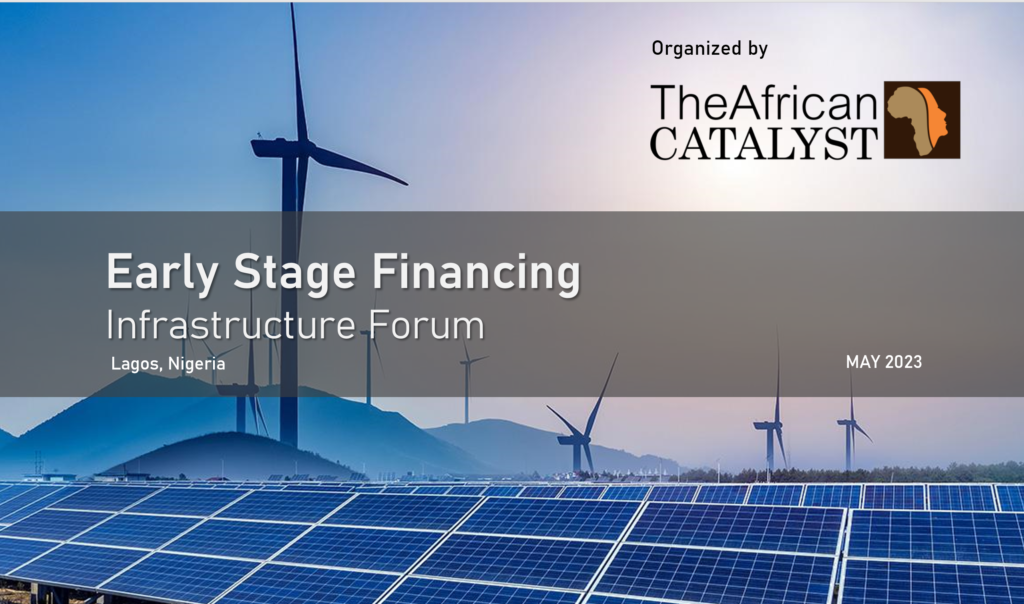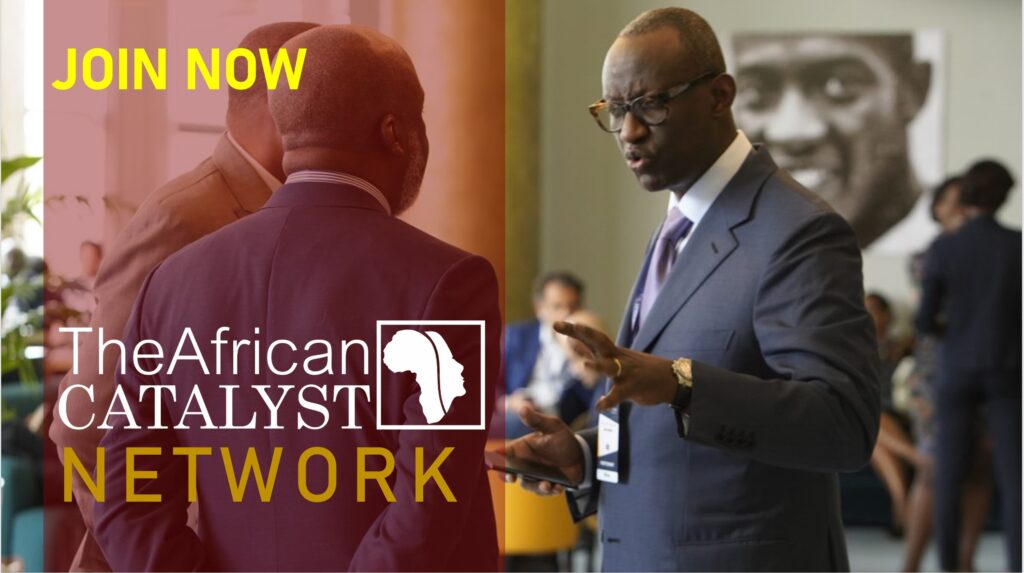The Africa CEO Forum, the world’s largest international conference for the private sector in Africa, and Philae Advisory, a financial and strategic advisory specialising in Africa’s infrastructure and energy sector, have joined forces to assess and provide guidance on financing decarbonised growth in Africa in a publication titled “Six Key Recommendations on Climate Finance for African Growth”.
This article by The African Catalyst reviews this publication, highlighting key facts and insights.
Mobilise Climate Finance To Power African Growth
Currently, Africa is home to 75% of the world’s population without access to electricity. This major impediment to economic growth could become even more acute in the coming decades due to an unprecedented demographic trend: in less than 30 years’ time, one out of every four people living on Earth will be African.
Access to electricity is therefore the continent’s most pressing challenge, a generational endeavour, and one of the United Nations’ 17 Sustainable Development Goals (SDG7). Meeting this goal means that this electricity has to be affordable. And to be sustainable, it has to be as low-carbon as possible.
With renewable energy costs having dropped drastically over the past decade and the continent’s remarkable potential for solar, hydro, wind, geothermal and biomass energy, renewable energy (RE) meets the dual challenge of growth and decarbonisation and offers an opportunity to accelerate affordable and sustainable development.

However, Africa’s share of installed RE capacity is half that of the rest of the world. The continent’s energy mix is still largely carbon-based, with charcoal being the main source of energy for household cooking.
Developing and rolling out renewable energy is one of the opportunities being explored by what is commonly referred to today as climate finance, which includes all the financial instruments, both private and public, designed for greenhouse gas mitigation of climate change adaptation projects.
How Can Climate Finance Support the Development of Renewable Energy in Africa?
While there is no shortage of global savings and financing, opportunities to invest in bankable projects are still too rare. So much so that Sub-Saharan Africa continues to attract less than 3% of climate finance.
In reality, most infrastructure projects do not reach financial close. According to McKinsey, fewer than.... 10% of projects make it to this stage, and 80% of them fail at the feasibility and business plan stage.
There are several reasons for this: the absence of realistic long-term planning that takes into account the entire electricity value chain from production to distribution; incomplete feasibility studies and business plans; the lack of a comprehensive regulatory framework; and failure to agree on a balanced and bankable risk allocation.
Drawing on a series of interviews with key sector decision-makers and an in-depth analysis of business cases, the report proposes six recommendations for accelerating the mobilisation of climate finance for African growth.
The following are the six recommendations:
- Implementation of Realistic Planning and Comprehensive Regulation: National plans for universal access to affordable, quality electricity are still too flimsy and unrealistic. It is essential that they cover the entire value chain from generation to distribution, and off-grid. Integrated planning, which accurately and realistically identifies potential demand, should lead to an increase in RE share, improved reliability of supply and lower costs. At the same time, comprehensive, independent and sustainable regulatory frameworks that ensure regulator accountability to stakeholders are essential for attracting private investors. With almost 70% of future rural electricity generation coming from off-grid solutions, sector-specific regulation is required.
- Structural Projects Upstream and Mitigation Risks: Almost 90% of climate finance in Africa comes from public sources, mainly DFIs. The challenge is to mobilise additional private financing. This requires DFIs to ramp up assistance to governments to enable them to invest in the upstream phase of project preparation and to strengthen mechanisms that allow for rapid agreement on a balanced and bankable risk allocation. DFIs should also provide greater access to risk mitigation instruments, including guarantee instruments which, given their potential to reassure private finance, remain, so far, largely under-utilised.
- Increased Mobilisation of Global Savings through DFIs: This is needed to meet the financing requirement for Africa’s electrification, estimated up to $25 billion per year until 2030. DFIs must foster the growth of blended financing vehicles, for example by offering first loss guarantees. They would thus act as an investor-catalyst capable of boosting returns and mitigating risks, thereby attracting private finance. DFIs should also be promoting the development of green bonds in local markets, by fostering the establishment of a green taxonomy and by supporting financial and industrial players’ decarbonisation strategies. Lastly, to further increase the mobilisation of global savings, the International Monetary Fund (IMF) could play a signalling role amongst international investors by ensuring that resources allocated to low-income countries are efficiently directed towards mitigation or adaptation expenditures.
- Maximisation of Potential Carbon Credits: Carbon credits are assets that value the avoidance, reduction and absorption of greenhouse gases, which buyers typically use to offset their own CO2 emissions. They are a relevant additional source of financing for the necessary investments in decarbonised growth. Better integration into the international volontary carbon markets is therefore needed. Facilitating the certification process and pre-financing carbon credits are ways of supporting project developers’ access to these markets. It also involves preparing for the operationalisation of the mechanisms set out in Article 6 of the Paris Agreement, which specifically aim at international cooperation on mitigation efforts, as established in the Nationally Determined Contributions (NDCs).
- Make Gas a Part of the Just Energy Transition: Gas-fired baseload power generation can compensate for intermittent RE-based power generation and thus increase its share in African power systems. Given that natural gas generates about half the carbon emissions of coal, gas should be considered as a transitional energy in Africa. Major public and private project financiers should contribute to the financing of these key projects, provided that they are included in the NDCs and demonstrate their ability to be consistent with a low-carbon trajectory.
- Investment in Electricity Storage and Green Hydrogen: Electricity storage can optimise the use and efficiency of the electricity grid. Mobilising more funding for investment in storage requires a specific regulatory framework. At the same time, governments must accelerate the emergence of a hydrogen industry based on renewable energy sources by establishing appropriate and predictable frameworks and helping to overcome initial economic barriers, in particular related to the financing of production and transmission infrastructure. Of key importance will be a set of policies such as robust carbon pricing and facilitating granting land rights, environmental permits and approvals. Development finance institutions, by providing innovative financing, guarantees and technical assistance to governments, will again have a key role to play in this ambition.
Download the full publication here.


